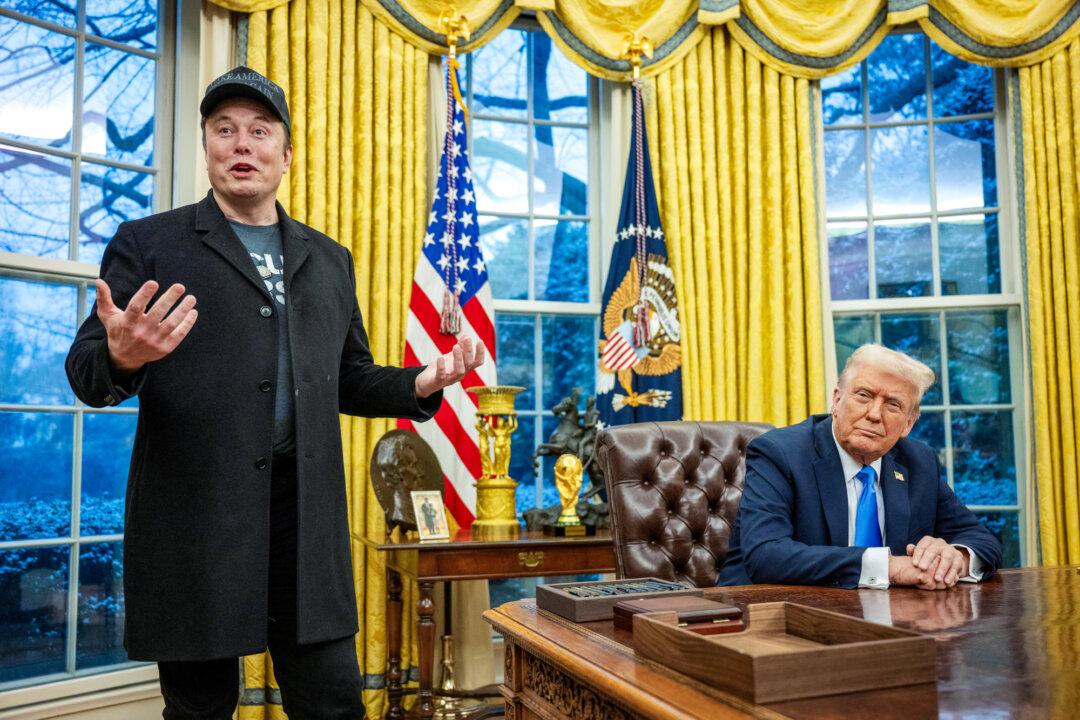There was widespread fear and loathing on Wall Street after the Federal Reserve’s announcement of another rate increase of 75 basis points—the sixth overall boost this year. The Fed hadn’t increased rates this far and this fast in the entire postwar period.
The pace is without precedent, and indicates that the Fed is far more panicked (and angry, as I explain below) than we knew.
Chairman Jerome Powell has said that there’s some “terminal rate” he is going for here, but doesn’t say what it is. Very likely, he wants to see real rates turn positive, which means boosting the rate the Fed charges depository institutions to above the inflation rate. That means a federal funds rate of 6 percent at least.
We are nowhere near that point yet. The consumer price index is running above 8 percent overall. For some sectors, such as utilities, the real-time rate approaches 15 percent. Food and beverages are at 9.2 percent. Transportation and housing are down, although the price pressure has only been transferred to two sectors that had previously been stable: health care and household durables.
Powell still swears by the 2 percent inflation target but please understand what this means. Prices, as they are now overall, are not going back to what they were. The damage is done. Powell is only proposing to slow devaluation. For many Americans who are in shock over what has happened, this news is very disappointing, but it’s a reality.
The damage done by Congress and the Fed in 2020 and 2021 will be with us for a very long time.
There is no avoiding this: the outrageous and unconstitutional pandemic response was the trigger. While government believed it was fighting a virus from China, it was actually unleashing another in the form of wild fiscal and monetary profligacy. This second virus has to become endemic: prices must adjust to $6.5 trillion in paper money that didn’t exist in 2019.
While nothing the Fed does now will stop this adjustment from happening, this much is clear: Powell wants to go down in monetary history as the man who slayed this beast. He wants to be legendary like the great inflation slayer Paul Volcker. But if that’s the case, there’s a very long way to go. He must not only reverse the terrible errors of 2020–21, he’s really taking on the entire monetary regime that came to exist after 2008.

Please allow me to crawl into Powell’s head a bit here. He has long known that zero interest rates were a dangerous policy. They only seemed to work in 2008 and after that because the Fed was paying above-market rates to banks to hold their deposits. That was then-Fed chief Ben Bernanke’s innovation to allow the financial system to continue operating without unleashing inflation. However, Powell knew that this was unsustainable in the long run, so he set out to change it and was making progress in this effort from the fourth quarter of 2019.
The next step taken by Congress made the old Bernanke plan impossible to follow. They wanted immediate stimulus payments by the trillions shelled out to businesses and all individuals. Nothing like this has ever happened, and what it meant in terms of monetary experience is rather shocking. It absolutely guaranteed that the United States would experience inflation such as we hadn’t seen in 40 years.
I can only just imagine Powell’s internal posture from January 2021 and after, especially once the Biden administration decided to double down on the insanity and cough up more stimulus and more spending. By that time, he knew that the dreaded virus wasn’t nearly as universally deadly as they claimed in the early days.
Like Trump himself, Powell had been trolled by the national security establishment to go against all his instincts and training.
The rate increases, then, amount to Powell’s revenge. He recalls all-too-well those early days of the pandemic when he was surrounded by all kinds of government big shots who were screaming at him to do his patriotic duty. He complied. Now, he not only regrets going along but has tapped into his inner monetary fundamentalist and decided to do his part to get the country back on sound financial footing.
That’s likely what accounts for his take-no-prisoners approach here. You know that he must have faced incredible pressure from the Biden administration to back off but he was fooled once and won’t be fooled again.
The problem, however, is that nothing he’s doing now will tame inflation, at least not in the short or medium term. There is simply nothing he can do about fixing the great monetary explosion of 2020. There is no mop big enough to soak up that liquidity. It’s here to stay.
![(Data: Federal Reserve Economic Data [FRED], St. Louis Fed; Chart: Jeffrey A. Tucker)](/_next/image?url=https%3A%2F%2Fimg.theepochtimes.com%2Fassets%2Fuploads%2F2022%2F11%2F03%2F2-JAT-2022.11.03-1200x945.png&w=1200&q=75)
And that’s why he is rather sanguine about the prospect that his actions will drive a recession. In public, he claims he can soft-land to normalcy but, in private, he likely doesn’t care that much. His personal and professional legacy are at stake.
He will tame inflation one way or another, and clean up the Fed’s balance sheet one way or another.
What this means for the macroeconomic environment is a continuation and intensification of stagflation. The housing market will continue to fall. High-flying tech companies that have grown to gargantuan size, based on leverage and lockdowns, will continue to come back to earth.
At some point in this cycle, labor markets will respond with an excruciating purge of white-collar jobs in inflated mid-management positions. Americans’ standards of living will continue to fall. Nothing can change that. The damage is done. Powell’s job now is to bring back sanity and prepare for long-term recovery.







